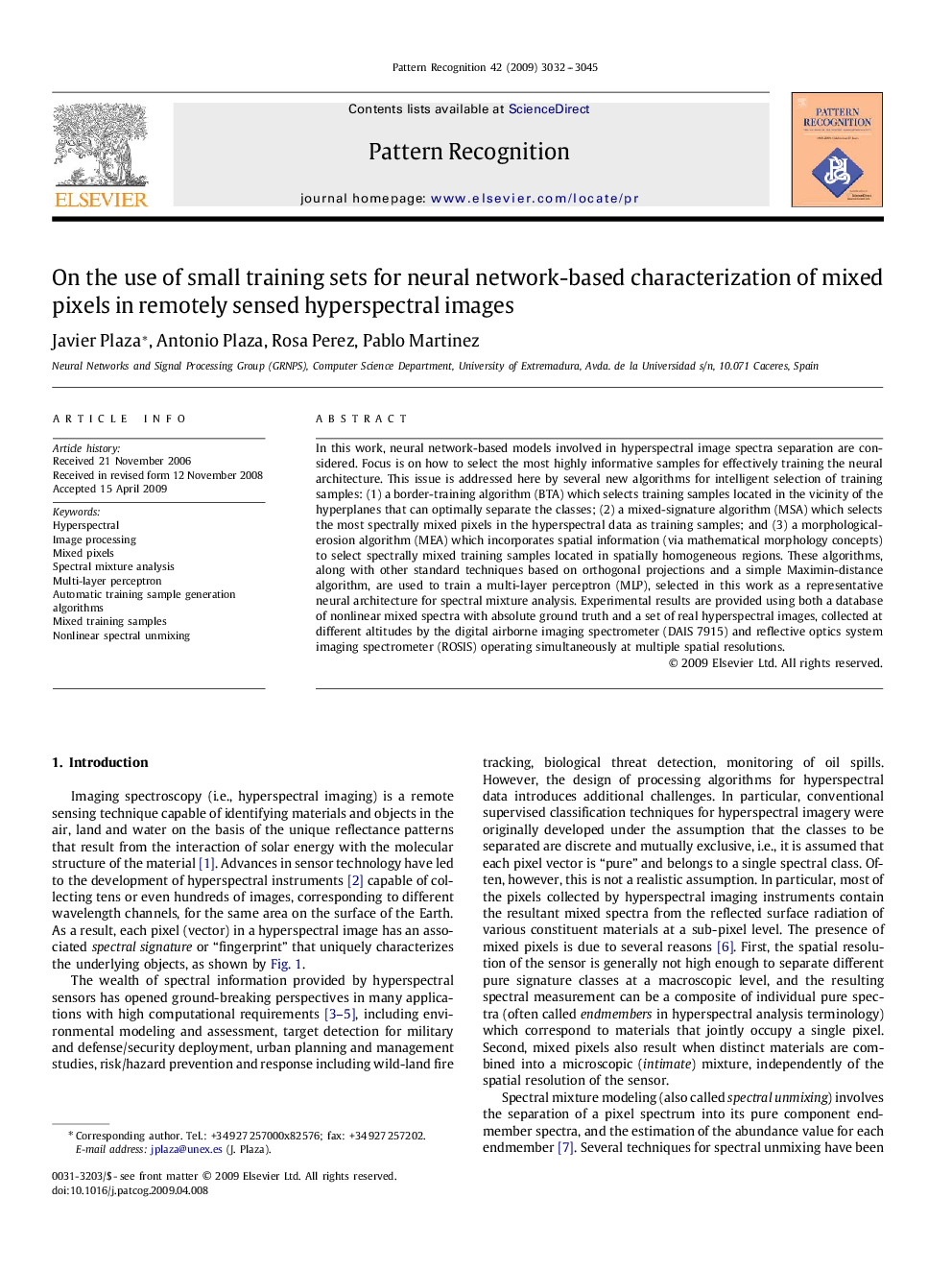| Article ID | Journal | Published Year | Pages | File Type |
|---|---|---|---|---|
| 532642 | Pattern Recognition | 2009 | 14 Pages |
In this work, neural network-based models involved in hyperspectral image spectra separation are considered. Focus is on how to select the most highly informative samples for effectively training the neural architecture. This issue is addressed here by several new algorithms for intelligent selection of training samples: (1) a border-training algorithm (BTA) which selects training samples located in the vicinity of the hyperplanes that can optimally separate the classes; (2) a mixed-signature algorithm (MSA) which selects the most spectrally mixed pixels in the hyperspectral data as training samples; and (3) a morphological-erosion algorithm (MEA) which incorporates spatial information (via mathematical morphology concepts) to select spectrally mixed training samples located in spatially homogeneous regions. These algorithms, along with other standard techniques based on orthogonal projections and a simple Maximin-distance algorithm, are used to train a multi-layer perceptron (MLP), selected in this work as a representative neural architecture for spectral mixture analysis. Experimental results are provided using both a database of nonlinear mixed spectra with absolute ground truth and a set of real hyperspectral images, collected at different altitudes by the digital airborne imaging spectrometer (DAIS 7915) and reflective optics system imaging spectrometer (ROSIS) operating simultaneously at multiple spatial resolutions.
